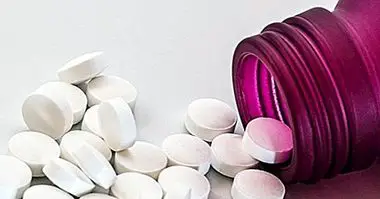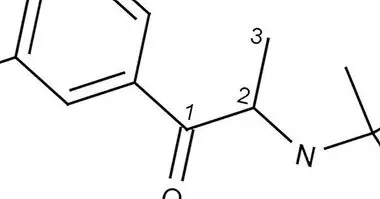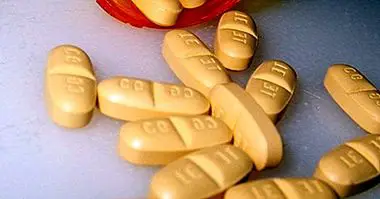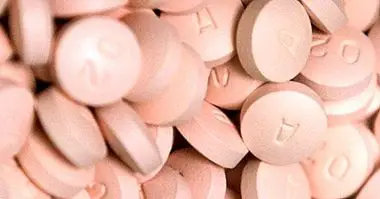IRSN: uses and side effects of these drugs
In the treatment of depression, one of the most frequent mental disorders, a great number of methods and therapeutic alternatives have been created in order to reduce and eliminate the symptoms.
From the pharmacology, it has tried to synthesize different types of substances for that purpose. And among the most novel and promising we can find a group that specifically affects different neurotransmitters that are linked to the typical processes of subjects with depression. We are talking about Specific Inhibitors of Reuptake of Serotonin and Noradrenaline, or SNRI .
- Related article: "Types of psychotropic drugs: uses and side effects"
The SNRIs: type of substance and mechanism of action
Specific inhibitors of serotonin and noradrenaline reuptake or SNRI are a type of antidepressant which are characterized by, as the name suggests, inhibiting or blocking the reuptake of the neurotransmitters serotonin and noradrenaline in the brain.
This implies that the presynaptic neurons will not reabsorb the excess of these neurotransmitters not used by the postsynaptic neuron, so that they will remain in the synaptic space and be available for the postsynaptic neurons to continue acting. In other words, they cause more noradrenaline and serotonin in the brain .
We are facing a relatively recent group of drugs, which usually causes few secondary symptoms and together with the SSRIs are the most effective and safe that exist today. Keep in mind, however, that as with all antidepressants, there is a time lag of several weeks in which they do not have a noticeable effect , since the brain must and will make changes in regard to the brain receptors of these hormones.
Its advantages over other antidepressants are found in that Two of the main monoamines associated with depressive symptoms work , as well as the anxious.
These neurotransmitters they are linked to the state of mind, to the motivation (especially noradrenaline), the ability to concentrate and attention, with aspects such as anhedonia, apathy, negative mood and different cognitive and emotional aspects. In addition, they do not usually generate histaminergic or cholinergic effects, and side effects associated with these hormones are not frequent.
- Related article: "Types of antidepressants: characteristics and effects"
Main examples of IRSN
The SNRIs are a group of drugs that share a similar mechanism of action, having different substances with different chemical compositions, properties that, although not equal, generate similar changes at the brain level. Some of the main exponents of this group are the following.
1. Venlafaxine
One of the most well-known IRSN , venlafaxine is known for its use as a treatment for depression, being one of the most prescribed drugs of this type and the oldest of them.
It has also been used in cases of social phobia and other anxiety disorders, and has been used in post-traumatic stress disorder. In addition to serotonin and noradrenaline, too may have some effect on dopamine in high doses .
Despite being an SNRI, its effect is much greater on serotonin (it is estimated that up to five times more), and even at low doses can only affect this neurotransmitter.
- Related article: "Venlafaxine: uses, side effects and precautions"
2. Duloxetine
Another of the most famous and used specific inhibitors of the reuptake of serotonin and noradrenaline, duloxetine is a relatively recent ISRN used for the treatment of major depression (being a highly effective drug in the treatment of this type of symptoms) and other psychic and medical conditions. As well Its role in the treatment of urinary incontinence is known.
- You may be interested: "Duloxetine: uses and side effects of this drug"
3. Milnacipran
Antidepressant drug known for its role in the treatment of depressive disorders. It is also prescribed to combat the pains of fibromyalgia and other pain disorders.
4. Levomilnacipran
A psychopharmaceutical approved in 2013, the levomilnacipran is an ISRN that has as particularity the fact that its action on noradrenaline practically doubles the one it has on serotonin, this being the most noradrenergic ISRN that exists today. Very useful in order to alleviate motivational symptoms and improve aspects such as concentration and activity.
- Related article: "Levomilnacipran: uses and side effects of this drug"
5. Desvenlafaxine
Derivative of venlafaxine, desvenlafaxine is currently a relevant antidepressant not only for its role in the treatment of depression but also for serving as a treatment for menopause and neuropathic pain. But nevertheless its only clinical indication totally approved is that of depression .
Uses and applications
While as antidepressants they are all IRNS are used for the treatment of depression, it is not the only use they can have. Many of them are used in the treatment of different anxiety disorders d, sometimes even with greater preference than substances classified as anxiolytics, as in the case of generalized anxiety disorder or phobias (such as social anxiety).
Most of these drugs are also used for the treatment of pain-related conditions, such as fibromyalgia, chronic fatigue syndrome and neuropathies .
Risks and side effects
Specific inhibitors of the reuptake of serotonin and norepinephrine they are powerful psychodrugs very useful in the treatment of depression and other disorders and diseases. However, this does not imply that they can not generate unpleasant and even dangerous side effects.
As a general rule this type of drugs tends to generate sedation, gastrointestinal disorders, nausea and vomiting , dry mouth, headache and dizziness, hyperhidrosis, alterations in urination or excretion, sleep problems such as insomnia, sexual disorders such as inappetence, erectile dysfunction, ejaculatory problems and to reach orgasm.
Also, in some more serious cases, arrhythmias and blood pressure alterations may occur. It should also be borne in mind that they can generate or facilitate suicidal ideation, especially at the beginning of consumption, and in some cases convulsions.
As main contraindications, although they depend on the specific drug, there are usually pregnant and lactating women, people with heart, liver or kidney problems. In the case of people with diabetes, they should be especially careful and consult their doctor due to the risk of hyperglycemia. Neither should they be used in conjunction with IMAOS due to the risk of serotonin syndrome, and its use is contraindicated with alcohol or other substances and drugs.
- Related article: "MAOIs (monoamine oxidase inhibitors): effects and types"
Bibliographic references:
- Schueler, Y .; Kösters, M .; Wieseler, B .; Grouven, U .; Kromp, M .; Kerekes, M .; Kreis, J .; Kaiser, T .; Becker, T. & Weinmann, S. (2010). A systematic review of duloxetine and venlafaxine in major depression, including unpublished data. Acta Psychiatrica Scandinavica.



















